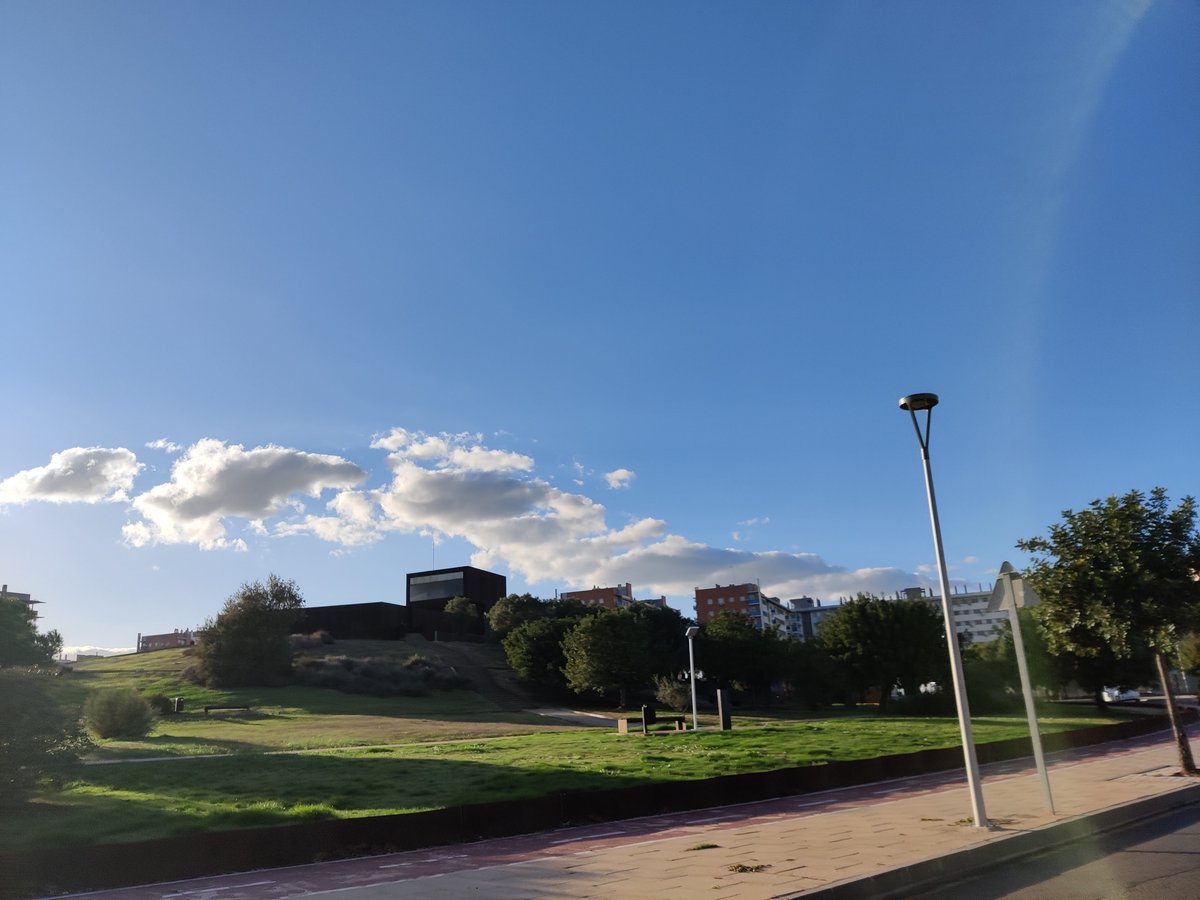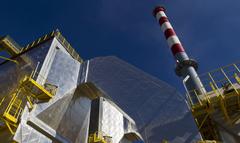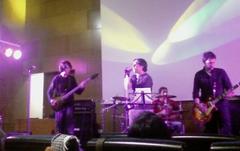
Huelva Archaeological Interpretation Center: Comprehensive Visitor Guide
Date: 14/06/2025
Introduction
Nestled at the meeting point of the Odiel and Tinto rivers on Spain’s southwestern Atlantic coast, the Huelva Archaeological Interpretation Center—often referred to as the Millenary City—provides a unique window into over 3,000 years of continuous human history. The center offers visitors a chance to explore the legacies of civilizations such as the Tartessians, Phoenicians, Romans, and Moors, all of whom shaped Huelva’s evolution as a hub for Mediterranean trade, mining, and cultural exchange. With interactive exhibits, accessible facilities, and regular guided tours, the center is a gateway to understanding Huelva’s enduring significance in the region. This guide is designed to provide all the essential information for planning your visit, from practical details to historical context and recommendations for nearby attractions (Huelva Archaeological Interpretation Center; Spain.info; Academia.edu).
Table of Contents
- History and Cultural Significance
- Visiting Information
- Key Exhibits and Museum Highlights
- Visitor Tips
- Nearby Attractions
- Frequently Asked Questions (FAQ)
- Conclusion and Recommendations
- Sources and Further Reading
History and Cultural Significance
Huelva has been a crossroads for civilizations for millennia. The earliest settlers, the Tartessians, utilized the region’s rich mineral resources, especially copper and silver, establishing trade links as early as the 13th century BC (VeniceWake). By the 9th century BC, Phoenician traders founded a colony, introducing new technologies and cultural practices. Archaeological discoveries—such as those at 3 Concepción Street—demonstrate the city’s role as a cosmopolitan trading emporium, with a blend of Phoenician, indigenous, and Greek artifacts (Academia.edu; Cambridge University Press).
Roman and later Moorish occupations further enriched Huelva’s archaeological record, especially in mining technology and urban development. The city’s port played a crucial role in exporting minerals and importing luxury goods, and Huelva later featured in the Age of Discovery—Columbus set sail from nearby Palos de la Frontera (Spainguides). Modern Huelva reflects this layered past in its architecture, cuisine, and cultural traditions (AndaluciaVibes; DestinationTheWorld).
Visiting Information
Location
Address: Av. Alameda Sundheim, 13, 21003 Huelva, Spain
Located centrally and within walking distance of city landmarks such as Casa Colón and Plaza del Punto, the center is easily accessible by public transport, car, or on foot (Spain.info; Come Ama Viaja).
Opening Hours
- Tuesday–Sunday: 9:00 AM – 8:00 PM (Interpretation Center: 10:00 AM – 6:00 PM)
- Closed: Mondays and select public holidays
Tip: Hours may change during special exhibitions or holidays. Always check the official website before your visit.
Tickets and Admission
- General Admission: €5 (Interpretation Center); free for EU citizens at the museum; €3–€5 for non-EU visitors
- Discounts: Available for students, seniors, and groups
- Children: Under 12 (sometimes up to 14) enter free
- Special Exhibitions: May require a supplemental fee
Purchase tickets online through the official tourism website or at the entrance. Booking ahead is recommended during peak seasons.
Accessibility and Facilities
- Fully wheelchair accessible (ramps, elevators)
- Accessible restrooms on all floors
- Assistance for visitors with disabilities (advance notice recommended)
- Cloakroom, gift shop, seating areas, and free Wi-Fi
- Most information panels in Spanish; use translation apps or book guided tours for enhanced experience (NextTourismGeneration)
Note: There is no on-site café, but dining options are plentiful nearby, particularly around Plaza del Punto and Plaza de las Monjas.
Guided Tours and Events
- Guided Tours: Offered daily in Spanish and English at 11:00 AM and 4:00 PM; private tours available by arrangement
- Educational Workshops: Designed for families and school groups
- Special Events: Temporary exhibitions, lectures, and workshops are held throughout the year. Check the official schedule for updates.
Key Exhibits and Museum Highlights
- Tartessian Gallery: Funerary objects, metalwork, and ceramics from one of Europe’s earliest urban cultures
- Phoenician and Greek Collections: Ceramics, jewelry, and trading artifacts highlighting cross-cultural exchange
- Roman Mining Technologies: Including a monumental Roman water wheel from the Rio Tinto mines (Visit Andalucia)
- Islamic and Medieval Displays: Everyday items and architectural fragments from the Moorish period
- Fine Arts Section: Seven centuries of regional art, including medieval religious paintings and contemporary works
- Ethnology Gallery: Traditional crafts, tools, and displays of daily life in Huelva
Interactive displays and multimedia presentations are found throughout, making the museum engaging for all ages.
Visitor Tips
- Plan to spend 1–2 hours to fully explore the permanent and temporary exhibitions.
- Combine your visit with nearby sites: Casa Colón, Plaza del Punto, Muelle del Tinto, and Barrio Reina Victoria (Come Ama Viaja).
- For families: The museum is stroller-friendly and offers interactive elements for children.
- Language: Bring a translation app if needed; guided tours recommended for non-Spanish speakers.
- Photography: Allowed without flash, except in certain temporary exhibitions.
- Best times: Spring and autumn offer the most comfortable climate and fewer crowds (WildTrips).
Nearby Attractions
- Casa Colón: Historic 19th-century building and cultural center
- Barrio Reina Victoria: British-style neighborhood reflecting Huelva’s mining past
- Muelle del Tinto: Historic mineral export pier, ideal for scenic walks
- Plaza de las Monjas: Main city square, perfect for refreshments and people-watching
- Muelle de las Carabelas: Life-size replicas of Columbus’s ships, a short drive away
Combine these highlights with your museum visit for a comprehensive exploration of Huelva’s heritage (Andalucia.com).
Frequently Asked Questions (FAQ)
Q: What are the museum’s opening hours?
A: Tuesday to Sunday, 9:00 AM to 8:00 PM (Interpretation Center: 10:00 AM to 6:00 PM), closed Mondays and some public holidays.
Q: Are tickets required, and where can I buy them?
A: Yes, purchase at the museum or online via the official website.
Q: Is the museum wheelchair accessible?
A: Yes, with ramps, elevators, and accessible restrooms.
Q: Can I take photos inside?
A: Non-flash photography is generally allowed; check for restrictions.
Q: Are guided tours available?
A: Yes, in Spanish and English; arrange in advance for groups or special requests.
Q: Are children admitted free?
A: Children under 12 (sometimes up to 14) are admitted free; check current policy online.
Conclusion and Recommendations
The Huelva Archaeological Interpretation Center is an essential stop for anyone interested in the region’s millenary heritage. Its comprehensive exhibits, accessible facilities, and proximity to other cultural landmarks make it ideal for solo travelers, families, and groups. Enhance your experience by joining a guided tour, exploring interactive exhibits, and visiting during the mild spring or autumn. For the most current information on hours, ticketing, and events, consult the official website and consider using the Audiala app for exclusive audio guides and virtual tours.
Interactive Resources
- Explore the Virtual Tour and interactive map online.
Sources and Further Reading
- Huelva Archaeological Interpretation Center
- Come Ama Viaja – Things to Do in Huelva
- Spain.info – Museum Huelva
- VeniceWake – Historical Guide to Huelva City
- Academia.edu – The Emporium of Huelva and Phoenician Chronology
- Lonely Planet – Top Things to Do in Huelva
- Andalucia.com – Things to See in Huelva
- Visit Andalucia – Huelva City and Tartessians
- AndaluciaVibes – The Guide to See the Best of Huelva
- NextTourismGeneration – Accessibility in Tourism
- WildTrips – Huelva Spain What to Visit
- IAS Meeting Huelva



